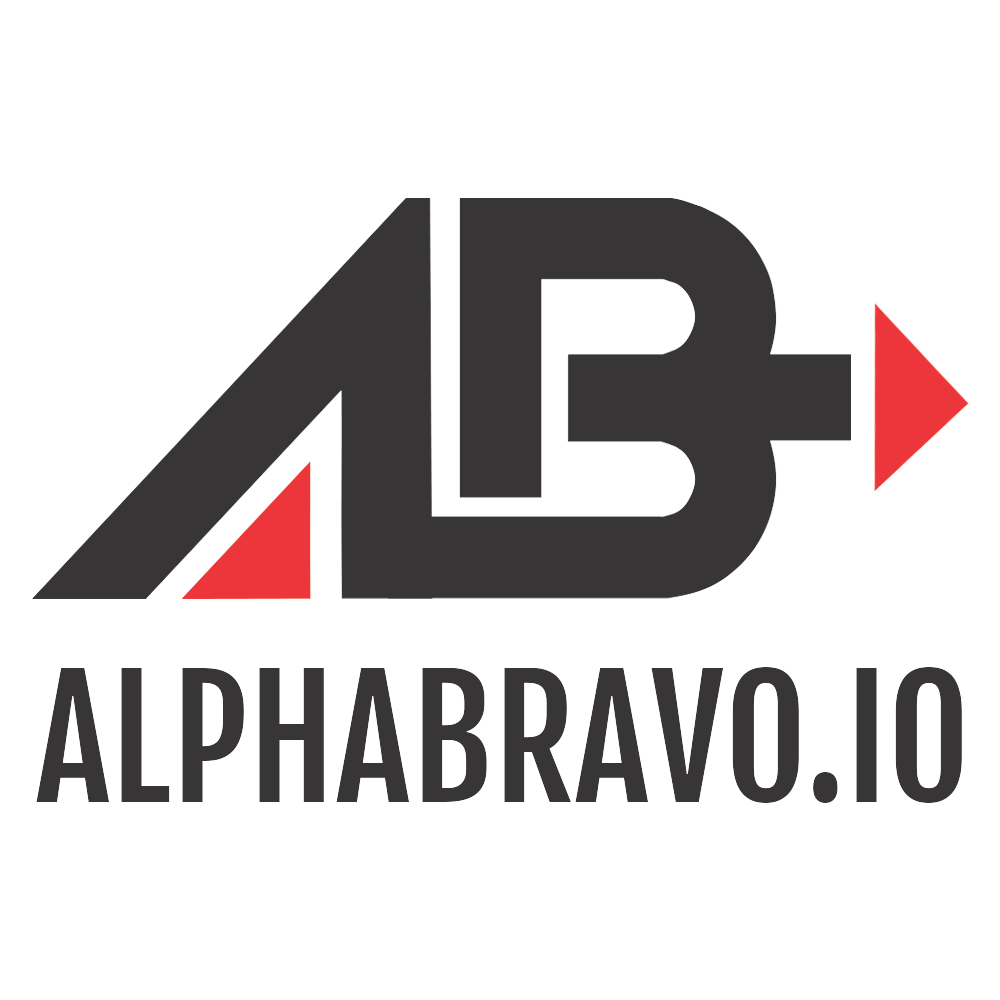ArgoCD in the Federal Trenches: When Uncle Sam Meets GitOps

Federal IT deployments have long been the stuff of legend, where a simple configuration change could take longer than a Supreme Court confirmation hearing and involve almost as much paperwork. Enter ArgoCD, the open-source GitOps powerhouse that's transforming how the Department of Defense and other federal agencies handle Kubernetes deployments across their labyrinthine hybrid cloud infrastructures. This isn't just another deployment tool; it's a paradigm shift that brings sanity to environments where security clearances outnumber actual deployed applications.
The GitOps Revolution in Government IT
ArgoCD represents a fundamental departure from the traditional "pray and deploy" methodologies that have plagued government IT for decades. As a declarative, GitOps continuous delivery tool for Kubernetes applications, ArgoCD treats Git repositories as the single source of truth for application configurations. This approach resonates particularly well in federal environments where audit trails matter more than deployment speed, and where the phrase "who changed what when" can trigger investigations that span multiple agencies.
The beauty of ArgoCD's GitOps model lies in its simplicity and transparency. Every change to production systems must first be committed to a Git repository, creating an immutable audit trail that would make even the most paranoid compliance officer smile. When ArgoCD detects differences between the desired state in Git and the actual state running in Kubernetes clusters, it can either alert operators or automatically synchronize the environment back to the declared configuration. This eliminates the age-old problem of "configuration drift," where production environments slowly deviate from their intended state like a bureaucratic game of telephone.
Federal agencies particularly benefit from ArgoCD's declarative approach because it aligns perfectly with existing governance frameworks. Infrastructure as Code (IaC) isn't just a best practice in government environments; it's often a mandate. ArgoCD seamlessly integrates with existing tools like Helm, Kustomize, and plain YAML manifests, allowing agencies to leverage their existing investments while modernizing their deployment pipelines. The tool's ability to visualize deployment states through both a web interface and command-line tools provides the transparency that federal oversight requires while maintaining the technical depth that engineers need.
Automated Synchronization and Drift Detection
One of ArgoCD's most compelling features for federal environments is its continuous monitoring and drift detection capabilities. The Application Controller component acts as a Kubernetes controller that perpetually compares the target state specified in Git repositories with the current state of applications running in the cluster. When discrepancies are detected, ArgoCD marks applications as "OutOfSync" and can automatically remediate the differences or alert operators to take manual action.
This capability proves invaluable in DoD environments where unauthorized changes to production systems can have far-reaching consequences. Consider a scenario where a well-meaning administrator manually modifies a security group rule for a LoadBalancer service to temporarily resolve a connectivity issue. In traditional environments, this change might persist indefinitely, creating a security vulnerability that goes unnoticed until the next audit cycle. ArgoCD's drift detection would immediately identify this deviation and either revert the change automatically or alert the security team to investigate.
The technical implementation of drift detection relies on ArgoCD's Repository Service, which maintains local caches of Git repositories and generates Kubernetes manifests based on the latest commits. This service runs independently of the cluster being managed, ensuring that even if the target environment is compromised, the source of truth remains intact. The three-phase sync process (PreSync, Sync, and PostSync) allows for sophisticated deployment workflows that can include security scanning, compliance validation, and gradual rollout strategies.
Security Architecture for High-Stakes Environments
Federal deployments demand security architectures that can withstand scrutiny from multiple oversight bodies while maintaining operational effectiveness. ArgoCD's security model was designed with these requirements in mind, implementing defense-in-depth principles that align with federal security frameworks. The tool has undergone rigorous internal security reviews and penetration testing to satisfy PCI compliance requirements, providing the security foundation that government agencies require.
Authentication in ArgoCD exclusively uses JSON Web Tokens (JWTs), eliminating the security risks associated with traditional username and password bearer tokens. For local admin users, JWTs are generated through the /api/v1/session endpoint and are configured to expire after 24 hours, significantly reducing the window of exposure if tokens are compromised. More importantly for federal environments, ArgoCD supports integration with enterprise Single Sign-On (SSO) providers through OAuth2 and OIDC, allowing agencies to leverage existing identity management systems like CAC/PIV authentication.
The authorization model implements Role-Based Access Control (RBAC) that maps directly to federal access control requirements. Authorization decisions are made by iterating through a user's JWT group claims and comparing them against predefined RBAC policies. This approach allows for fine-grained access control that can restrict not only what resources users can access but also what actions they can perform on those resources. For multi-tenant environments common in federal agencies, this granular control is essential for maintaining separation between different projects and security domains.
Network Security and Encryption
All network communication in ArgoCD occurs over TLS, including service-to-service communication between the three core components: argocd-server, argocd-repo-server, and argocd-application-controller. This end-to-end encryption ensures that sensitive configuration data and credentials remain protected during transit, even within supposedly secure network enclaves. The distributed architecture also provides security benefits by limiting the blast radius of potential compromises.
ArgoCD's handling of sensitive information follows federal security best practices by never returning sensitive data through APIs and redacting all sensitive information from logs. Cluster credentials, Git credentials, OAuth2 client secrets, and Kubernetes secret values are stored securely as bcrypt hashes or encrypted Kubernetes secrets within the argocd namespace. This approach ensures that even administrators with access to ArgoCD logs cannot extract sensitive credentials from system outputs.
For organizations requiring the highest levels of security assurance, security-hardened versions of ArgoCD are available that include distroless containers, Software Bill of Materials (SBOM) documentation, Common Vulnerabilities and Exposures (CVE) patching, and 100% FIPS-compliant builds. These hardened distributions are particularly valuable for federal agencies pursuing FedRAMP authorization, as they include the security controls and documentation required for high-impact systems.
Multi-Cluster Management in Hybrid Federal Clouds
Federal agencies typically operate in complex hybrid cloud environments that span multiple classification levels, geographic regions, and cloud service providers. ArgoCD's multi-cluster capabilities shine in these scenarios, providing centralized management and oversight while maintaining the security boundaries required by federal regulations. A single ArgoCD instance can manage deployments across multiple Kubernetes clusters, whether they're running in AWS GovCloud, Azure Government, on-premises data centers, or tactical edge environments.
The ApplicationSet controller represents ArgoCD's most sophisticated approach to multi-cluster management. ApplicationSets enable the automatic generation of multiple ArgoCD Applications based on templates and generators, dramatically reducing the administrative overhead of managing applications across numerous clusters. For a DoD organization deploying the same application stack to development, staging, and production environments across different classification networks, ApplicationSets can generate the appropriate Application configurations automatically.
Consider the following ApplicationSet configuration that deploys a monitoring application to multiple environments:
apiVersion: argoproj.io/v1alpha1
kind: ApplicationSet
metadata:
name: monitoring-stack
spec:
generators:
- list:
elements:
- cluster: unclass-dev
url: https://k8s-unclass-dev.example.mil
environment: development
- cluster: secret-prod
url: https://k8s-secret-prod.example.mil
environment: production
template:
metadata:
name: '{{.cluster}}-monitoring'
spec:
project: monitoring
source:
repoURL: https://gitrepo.example.mil/monitoring-manifests.git
targetRevision: HEAD
path: environments/{{.environment}}
destination:
server: '{{.url}}'
namespace: monitoring
This configuration automatically creates separate monitoring applications for each defined cluster while maintaining environment-specific configurations through directory structures in the Git repository. The ApplicationSet controller continuously monitors the configuration and automatically creates or removes Applications as the cluster list changes, ensuring that new environments are automatically included in the deployment pipeline.
Project-Based Multi-Tenancy
ArgoCD's Project feature provides the multi-tenancy capabilities essential for large federal organizations where multiple teams must share infrastructure while maintaining strict separation of concerns. Projects define logical boundaries that restrict what may be deployed (trusted Git repositories), where applications may be deployed (destination clusters and namespaces), and what types of Kubernetes objects may be created. This granular control enables federal agencies to implement defense-in-depth strategies while providing development teams with the autonomy they need to be productive.
Each Project can define its own RBAC settings, allowing for delegation of administrative responsibilities without compromising security. For example, a Project responsible for web applications might permit deployment of Deployments, Services, and ConfigMaps while explicitly denying access to security-sensitive resources like NetworkPolicies or PodSecurityPolicies. The Project configuration can also restrict source repositories to only those that have undergone security scanning and approval processes.
Projects also support the definition of custom roles that can be bound to OIDC groups or JWT tokens, enabling integration with existing federal identity management systems. This capability is particularly valuable in DoD environments where access must be controlled based on security clearances, organizational affiliations, and mission requirements. The automation tokens generated for specific projects provide a secure mechanism for CI/CD pipelines to deploy applications without requiring broad cluster administrative privileges.
Compliance Automation and Audit Readiness
Federal IT systems face constant scrutiny from multiple oversight bodies, making audit readiness a critical operational requirement rather than an annual exercise. ArgoCD's GitOps approach inherently provides many of the controls and audit trails that federal compliance frameworks require, transforming compliance from a burden into an automated byproduct of normal operations. Every change to production systems must be committed to Git before ArgoCD will deploy it, creating an immutable record of who made what changes when and why.
The declarative nature of GitOps aligns perfectly with federal requirements for configuration management and change control. Unlike traditional deployment methods where changes might be made directly on production systems and documented after the fact, ArgoCD enforces a workflow where documentation (in the form of Git commits) must precede implementation. This approach satisfies even the strictest interpretation of federal change management policies while reducing the administrative overhead typically associated with compliance.
ArgoCD's ability to detect and remediate configuration drift provides continuous compliance monitoring that goes far beyond traditional audit approaches. Rather than discovering compliance violations during quarterly audits, ArgoCD can detect unauthorized changes within minutes and either automatically remediate them or alert compliance teams for investigation. This real-time monitoring capability is particularly valuable for high-impact systems where even brief periods of non-compliance can have serious consequences.
Integration with Federal Security Tools
ArgoCD's extensible architecture allows for deep integration with the security scanning and compliance tools commonly deployed in federal environments. The PreSync, Sync, and PostSync hooks provide natural integration points for tools like Twistlock, Aqua Security, or Nessus to scan container images and configurations before they reach production environments. Custom resource hooks can enforce policy compliance by integrating with tools like Open Policy Agent (OPA) to validate that deployments meet federal security requirements.
The Repository Service's caching mechanism can be extended to include security scanning results, ensuring that only approved and scanned configurations are available for deployment. This approach creates a secure supply chain for configuration changes that mirrors the secure software development practices increasingly required in federal environments. Integration with tools like Harbor or Artifactory can ensure that only signed and scanned container images are deployed to production systems.
ArgoCD's support for multiple sources enables sophisticated security workflows where application configurations are sourced from approved repositories while secrets and environment-specific settings are managed through separate, more tightly controlled channels. This separation of concerns allows security teams to maintain control over sensitive configurations while enabling development teams to iterate rapidly on application logic.
Advanced Deployment Strategies for Mission-Critical Systems
Federal systems often require deployment strategies that go far beyond simple rolling updates, particularly for mission-critical applications where downtime can impact national security or public safety. ArgoCD's integration with advanced deployment tools like Argo Rollouts enables sophisticated strategies like blue-green deployments, canary releases, and feature flag-driven rollouts that minimize risk while maintaining operational tempo. These capabilities prove essential when deploying updates to systems that support combat operations or critical infrastructure.
Blue-green deployments represent the gold standard for risk mitigation in federal environments. ArgoCD can orchestrate blue-green deployments by maintaining two identical production environments and switching traffic between them only after extensive testing and validation of the new version. This approach provides instantaneous rollback capabilities and eliminates the gradual failures that can occur with rolling update strategies. For DoD systems supporting real-time operations, the ability to instantly revert to a known-good configuration can be mission-critical.
Canary deployments offer a middle ground between the safety of blue-green deployments and the resource efficiency of rolling updates. ArgoCD can gradually shift traffic to new versions while monitoring key performance indicators and automatically rolling back if anomalies are detected. This approach is particularly valuable for large-scale federal systems where the blast radius of a failed deployment could affect thousands of users across multiple agencies.
Disaster Recovery and Business Continuity
ArgoCD's distributed architecture and GitOps approach provide inherent disaster recovery capabilities that align with federal continuity of operations requirements. Since the entire system state is stored in Git repositories, recovering from catastrophic failures becomes a matter of spinning up new infrastructure and pointing ArgoCD at the existing repositories. This approach dramatically reduces Recovery Time Objectives (RTOs) compared to traditional backup and restore methodologies.
The ability to maintain multiple ArgoCD instances across different geographic regions enables active-active disaster recovery scenarios where failover can occur automatically without human intervention. Federal agencies with requirements for geographic distribution can deploy ArgoCD instances in multiple regions while maintaining synchronized Git repositories through standard Git replication mechanisms. This approach ensures that critical deployments can continue even if entire data centers become unavailable.
ArgoCD's declarative approach also simplifies compliance with federal requirements for system documentation and disaster recovery testing. Since the entire system configuration exists in version-controlled repositories, disaster recovery testing becomes a matter of deploying to test infrastructure rather than maintaining separate documentation that may become outdated. This approach ensures that disaster recovery procedures are always current and actually tested rather than theoretical.
Operational Excellence in Federal Environments
The operational requirements of federal IT systems extend far beyond basic functionality to include extensive monitoring, logging, and reporting capabilities that support both mission operations and oversight activities. ArgoCD's comprehensive observability features provide the visibility that federal operators need while maintaining the security controls that federal policies require. The tool's integration with standard monitoring stacks enables the rich dashboards and alerting capabilities that support 24/7 operations centers.
ArgoCD's web interface provides real-time visibility into the status of all managed applications across multiple clusters, enabling operators to quickly identify and respond to issues before they impact mission operations. The interface displays not just the current state of applications but also the history of deployments, providing the audit trail that federal environments require. Color-coded status indicators and detailed diff views enable rapid identification of configuration drift or deployment failures.
The command-line interface provides the automation capabilities that federal environments need for integration with existing operational procedures and runbooks. CLI commands can be incorporated into monitoring scripts, automated response procedures, and scheduled maintenance workflows. The programmatic interface ensures that operational procedures can be automated and standardized across different teams and environments.
Performance Optimization and Resource Management
Federal environments often operate under significant resource constraints, making performance optimization critical for both cost control and mission effectiveness. ArgoCD's efficient architecture minimizes the overhead associated with continuous monitoring and synchronization. The Repository Service caches Git repositories locally, reducing network traffic and improving response times for large-scale deployments. The Application Controller's reconciliation loop is designed to scale efficiently across hundreds or thousands of applications without overwhelming cluster resources.
ArgoCD's support for resource quotas and limits at the Project level enables fine-grained resource management that aligns with federal budgeting and allocation processes. Projects can be assigned specific resource limits that prevent any single team or application from consuming excessive cluster resources. This capability is particularly valuable in shared federal environments where multiple agencies or mission areas must coexist on the same infrastructure.
The tool's ability to work with existing Kubernetes resource management tools like the Vertical Pod Autoscaler and Horizontal Pod Autoscaler enables automated scaling strategies that respond to workload demands while maintaining budget constraints. ArgoCD can deploy and manage the configurations for these autoscaling tools, ensuring that scaling policies are consistent across environments and aligned with operational requirements.
The Path Forward: Modernizing Federal IT
ArgoCD represents more than just a deployment tool; it embodies a fundamental shift toward modern, secure, and auditable IT operations that federal agencies desperately need. The combination of GitOps principles, robust security controls, and enterprise-grade scalability provides a foundation for the digital transformation initiatives that are reshaping government IT. As federal agencies grapple with legacy modernization, cloud migration, and cybersecurity challenges, ArgoCD offers a proven path forward that balances innovation with the security and compliance requirements that define federal IT.
The success of ArgoCD in federal environments ultimately depends on cultural adoption as much as technical implementation. The shift from manual, ticket-driven deployment processes to automated, Git-driven workflows requires changes in both technology and mindset. However, early adopters in the federal space have demonstrated that these changes can be implemented successfully while maintaining the security posture and audit capabilities that federal oversight requires.
The future of federal IT lies in platforms that can adapt to rapidly changing requirements while maintaining the rock-solid security and compliance foundations that protect national interests. ArgoCD provides exactly this capability, enabling federal agencies to embrace modern DevOps practices without compromising the security and oversight that mission-critical systems demand. In an era where digital transformation is no longer optional, ArgoCD offers federal agencies a clear path toward more agile, secure, and auditable IT operations that can support the missions of tomorrow while meeting the compliance requirements of today.

